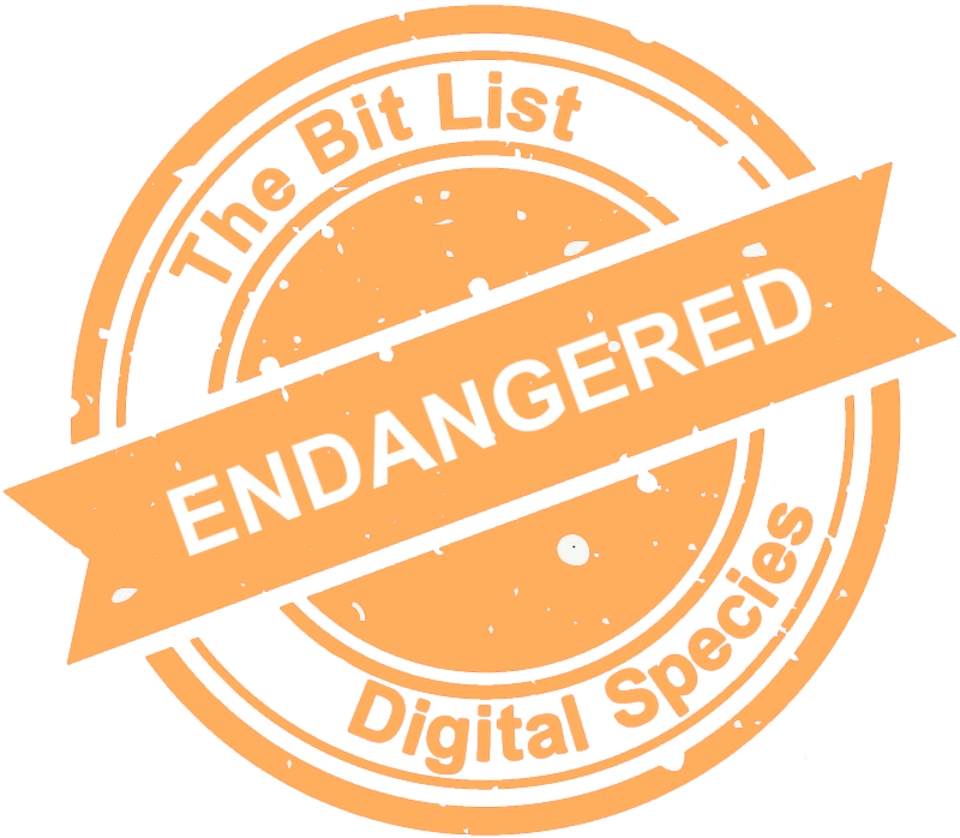Legacy Media Art
 |
||
|
Media art in storage or not otherwise displayed but where the artists or technicians are available to support installation. |
||
|
Digital Species: Media Art |
Trend in 2023:
|
Consensus Decision |
|
Added to List: 2019 |
Trend in 2024:
|
Previously: Endangered |
|
Imminence of Action Action is recommended within three years, detailed assessment in one year. |
Significance of Loss The loss of tools, data or services within this group would impact on many people and sectors. |
Effort to Preserve | Inevitability It would require a small effort to preserve materials in this group, requiring the application of proven tools and techniques. |
|
Examples Media art in storage. |
||
|
‘Critically Endangered’ in the Presence of Aggravating Conditions Lack of documentation to enable maintenance; uncertainty over IPR or the presence of orphaned works; complex interdependencies on specific hardware, software or operating systems; lack of capacity in the gallery or workshop; lack of strategic investment; complex external dependencies; loss of institutional memory resulting from staff churn; poor working relationship between the gallery and artist/workshop; lack of conservation assessment. |
||
|
‘Vulnerable’ in the Presence of Good Practice Strong documentation; clarity of preservation path and ensuing responsibilities; proven preservation plan; capacity of workshop to support re-installation; capacity of gallery to conserve; capacity of gallery to re-install; retention of institutional memory including archives of correspondence between gallery and artist/workshop; strong and continuing working relationship between the gallery and artist/workshop; regular conservation assessment. |
||
|
2023 Review This entry was added in 2017 as ‘Media Art,’ which was first introduced with particular reference to historical media art. The 2019 Jury rescoped this entry to ensure greater specificity in its recommendation to represent works held in galleries but no longer displayed, but where there is a continuing working relationship between the gallery and the artist or workshop and reasonable expectation that support for preservation could still be obtained when required. The 2020 Jury identified a trend towards greater risk, given that many museums and galleries, which often rely on visitors for income, had been closed for extended periods. Moreover, any form of digital materials that rely on an individual’s knowledge is at particular risk by a pandemic. For similar reasons, the 2021 Jury also identified a 2021 trend towards greater risk, noting that digital materials in museums and galleries records are likely to be at greater risk in these circumstances. The 2023 Council agreed with the Endangered classification with overall risks remaining on the same basis as before (‘No change’ to trend), while also noting a decrease in imminence of action as well as the required effort to preserve. |
||
|
2024 Interim Review The 2024 Council agreed These risks remain on the same basis as before, with no significant trend towards even greater or reduced risk (‘No change’ to trend). |
||
|
Additional Comments This entry attempts to capture a point in the lifecycle of media art where preservation risks are increasing but not yet critical. There is a risk that preservation issues will not become apparent until the piece is brought out of storage when considered for loan or exhibition – often on timescales that make it too late to address preservation concerns effectively. Galleries should be aware that the range of data/formats/hardware/software embedded in media art can be wide and vary at different speeds. Sooner action is needed to prevent the material from becoming Critically Endangered once the artist has died or relationships break down. Where the artist is still around, there is a major reduction in the inevitability of loss and its potential to be a potentially newsworthy subject. The loss of it would be just as impactful and significant though. Preservation of legacy media artworks is dependent on access to obsolete technology and also the knowledge of how to operate said technology. Documentation around the production process and artist intent can be limited. This is a risk in terms of preserving a truly authentic artwork. See also:
|
||









































































































































